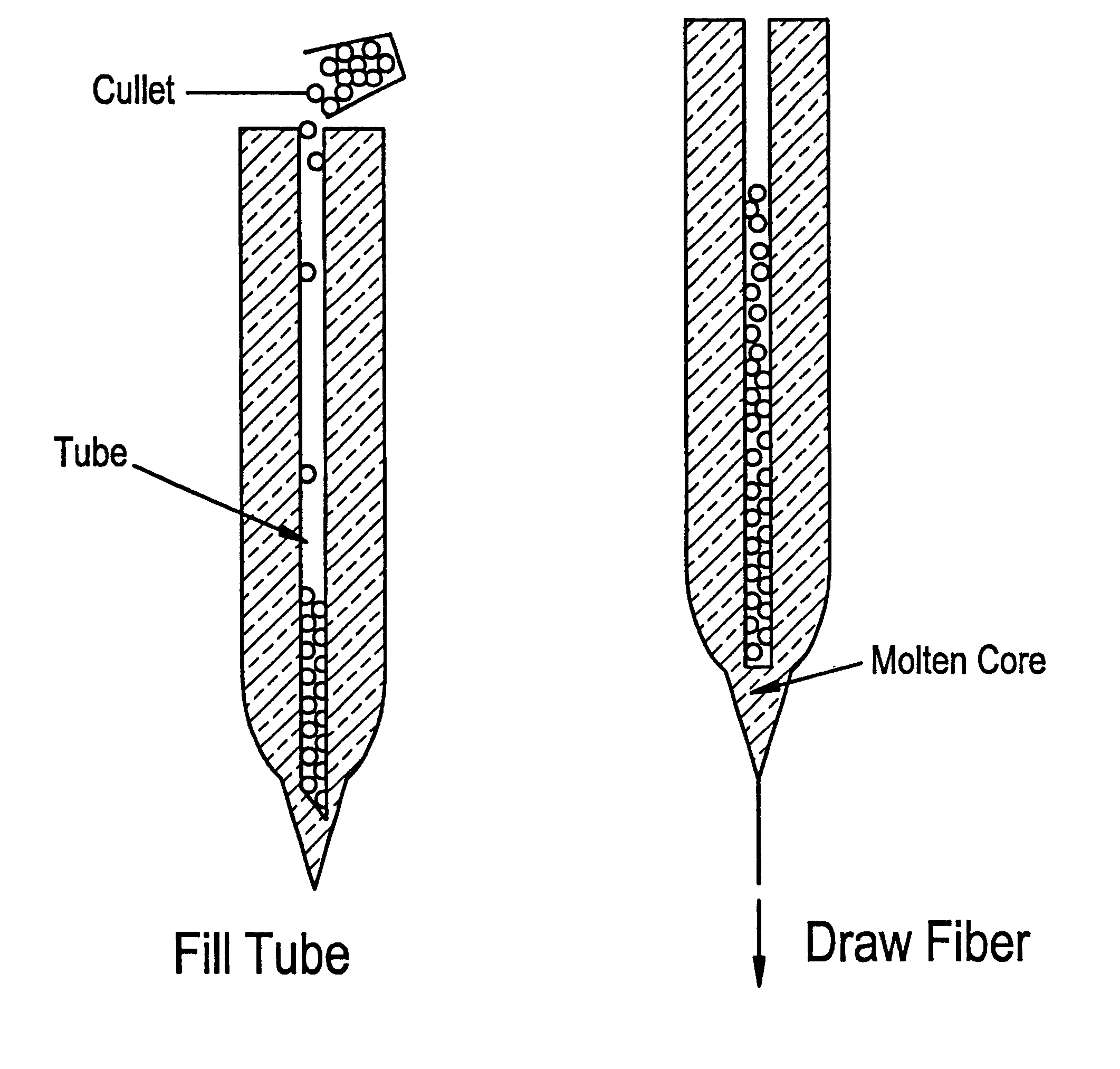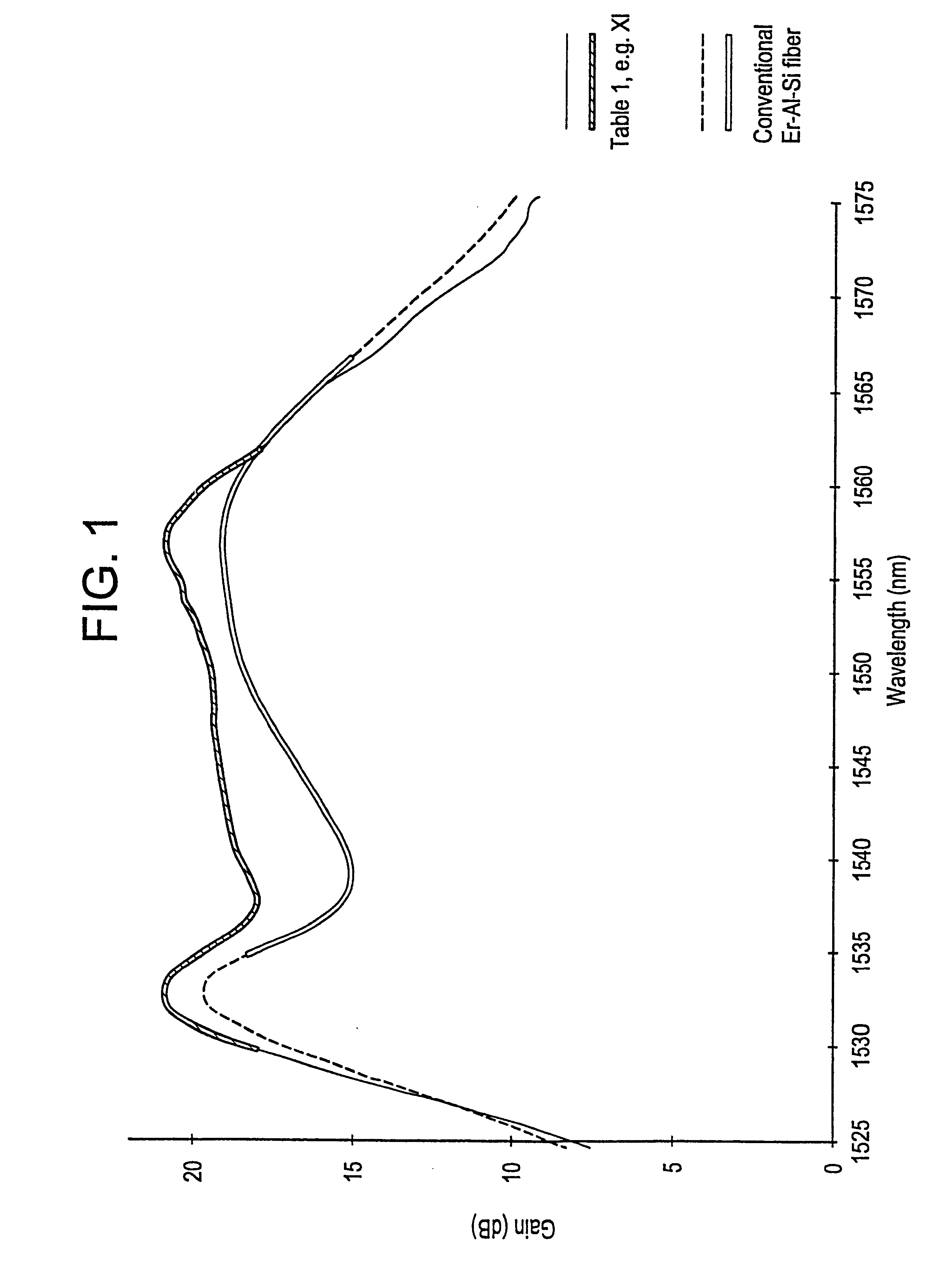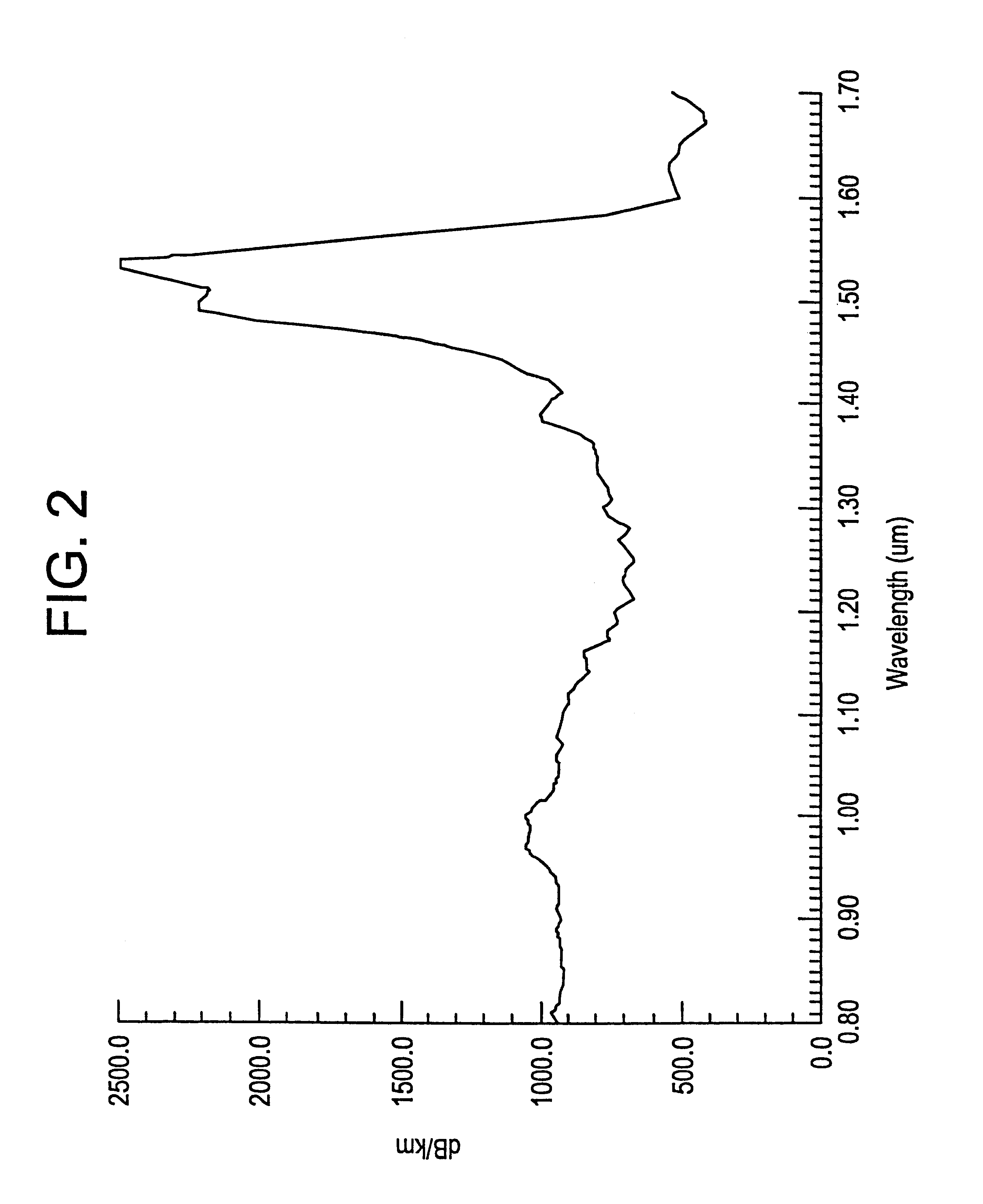Method of making an optical fiber by melting particulate glass in a glass cladding tube
a technology of optical fiber and glass cladding, which is applied in the field of making optical fibers by melting particulate glass in glass cladding tubes, can solve the problems of inoperable high data rate communication systems, inability to meet multi-channel amplification, and inability to meet the needs of multi-channel amplification,
- Summary
- Abstract
- Description
- Claims
- Application Information
AI Technical Summary
Benefits of technology
Problems solved by technology
Method used
Image
Examples
Embodiment Construction
A preferred embodiment of the invention is directed to an optical waveguiding device having a new rare earth doped, fluorinated aluminosilicate glass core composition, and to a non-CVD method for making a waveguiding optical fiber having the inventive core composition and a silicate glass cladding.
Reference will now be made in detail to the present preferred embodiments of the invention, examples of which are illustrated in the accompanying drawings and tables presented herein.
In a preferred embodiment of the invention, an optical article has a glass composition consisting essentially, in mole %, of:
up to 15 weight % fluorine in the form of a fluorinated component of the glass composition,
where RE(1) is Y.sup.3+ and / or La.sup.3+ and / or Gd.sup.3+ and / or Lu.sup.3+ ; R is Ba and / or Ca and / or Mg and / or Sr; (SiO.sub.2 +GeO.sub.2) is between 60-85 mole %; and the amount of (Al.sub.2 O.sub.3 -Ga.sub.2 O.sub.3)>(RO+"alk".sub.2 O+RE.sub.2 O.sub.3) where "alk" is Li and / or Na and / or K and / or ...
PUM
| Property | Measurement | Unit |
|---|---|---|
| particle diameter | aaaaa | aaaaa |
| gain flatness | aaaaa | aaaaa |
| gain flatness | aaaaa | aaaaa |
Abstract
Description
Claims
Application Information
 Login to View More
Login to View More - R&D
- Intellectual Property
- Life Sciences
- Materials
- Tech Scout
- Unparalleled Data Quality
- Higher Quality Content
- 60% Fewer Hallucinations
Browse by: Latest US Patents, China's latest patents, Technical Efficacy Thesaurus, Application Domain, Technology Topic, Popular Technical Reports.
© 2025 PatSnap. All rights reserved.Legal|Privacy policy|Modern Slavery Act Transparency Statement|Sitemap|About US| Contact US: help@patsnap.com



